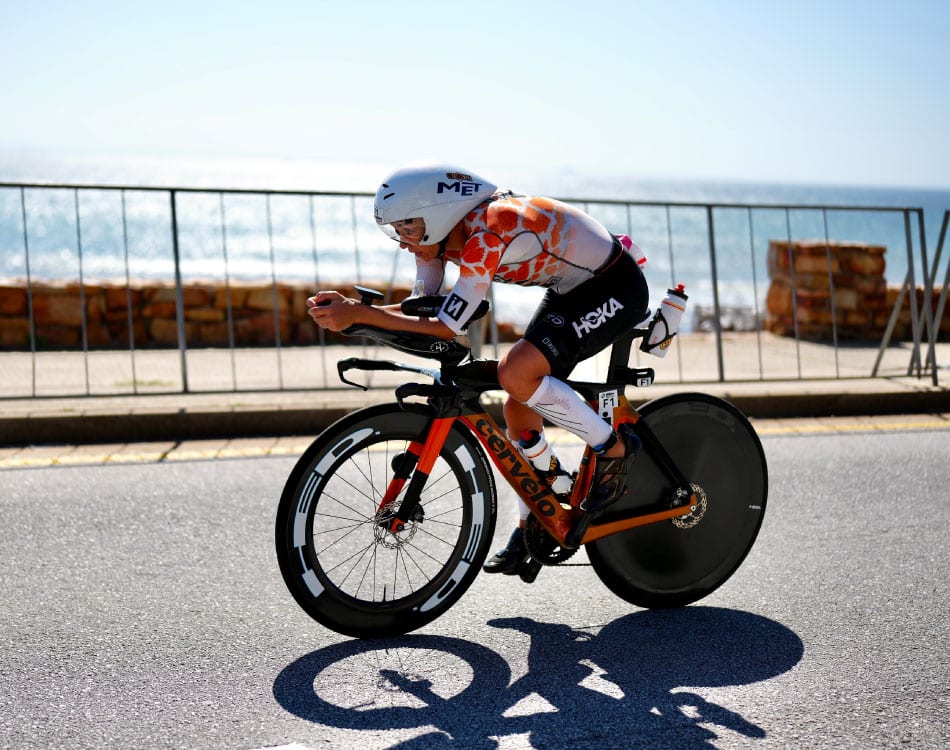There are many dos and don’ts when it comes to warming up before exercise and the best approach to support recovery after a hard session, with stretching a key component in every holistic plan.
With regard to stretching, advice has evolved over time as emerging research shed light on the most effective approach.
READ MORE | Optimise Your Performance Through Improved Mobility
It started with static stretching
When exercise and workouts for improved health and fitness started to hit the mainstream in the 1960s and ’70s, static stretching was the primary form of stretching recommended before exercise.
The static method involves stretching a muscle or group of muscles in a stationary position for a period between 15-90 seconds.
This technique focuses on elongating and relaxing muscles, allowing them to gradually extend beyond their normal range of motion (ROM).
The belief was that holding stretches for an extended time helped improve flexibility and most people, including athletes, followed this approach without questioning its effectiveness.
READ MORE | Why Dynamic Stretching Is The Key To Effective Pre-Workout Warm-Ups
The dawn of dynamic stretching
It wasn’t until sports science started to become more prolific in the late 1980s and early 1990s that health and fitness professionals started to question this approach.
Following numerous studies, researchers discovered that static stretching before intense physical activities can temporarily reduce muscle strength and power as it activates a protective neuromuscular reflex that temporarily reduces a muscle’s ability to produce maximal force.
As more studies emerged suggesting that static stretching could negatively impact performance by decreasing muscle strength and power before exercise, the search for a more effective method gathered momentum and support.
By the 2000s, we had a significant body of research that supported the use of dynamic stretching before exercise, which involves moving your body through a full range of motion in a controlled manner using movements that mimic the activities or exercises you are about to perform.
READ MORE | Self Myofascial Release Improves Flexibility, Mobility & Movement
Research reveals new insights
For example, a foundational study1 led by David Behm determined that “an acute bout of stretching impaired the warm-up effect achieved under control conditions with balance and reaction/movement time”.
And a 2005 study2 published in the Journal of Strength & Conditioning Research found that “dynamic stretching enhances muscular performance” when measuring leg extension power, and that power “was significantly greater than that after non-stretching” with no difference seen in those who used static stretching.
A more recent study3 published in the Journal of Human Kinetics in 2020 echoed these findings, with researchers showing that dynamic stretching “improved repeated-sprint performance to a greater extent than static stretching and no stretching”.
READ MORE | PNF Stretching: The Most Effective Way To Improve Range Of Motion
A combined model
Faced with these proven facts, it is clear that the most effective warm-up before a workout should include dynamic stretching, as opposed to static stretching, along with some light cardiovascular activity, and mobility exercises and specific movement drills that target the joints and muscles that you will use during your workout.
That’s not to say that static stretching does not work or cannot benefit your body and your ultimate performance.
Dynamic stretching helps warm up the muscles, increases blood flow, improves joint mobility, and enhances neuromuscular coordination, which are attributes that make it the most beneficial way to stretch before engaging in high-intensity exercise to boost performance.
Dynamic stretching benefits:
- Enhanced performance: Activates and prepares the muscles, improving overall performance during physical activities by increasing power, speed, and agility.
- Improved ROM: Helps to increase the range of motion in joints, promoting better mobility and flexibility.
- Reduce injury risk: By priming the muscles and increasing blood flow, dynamic stretching reduces the risk of injuries, such as muscle strains or tears.
After exercise, static stretching can provide benefits like supporting muscle recovery by reducing muscle tightness by relaxing and elongating muscles, reducing muscle tension, and promoting blood flow.
Due to its less intense nature, static stretching offers an ideal element for a post-workout cool-down routine as it can help to gradually lower your heart rate, body temperature, and breathing rate.
Regular post-exercise static stretching can also help maintain and improve overall flexibility by preventing muscles from becoming tight or stiff.
Static stretching benefits:
- Improved flexibility: Increases the length and flexibility of muscles and tendons, which improves overall flexibility.
- Relaxes muscles: Holding static stretches promotes muscle relaxation, reducing muscle tension and aids in post-workout recovery.
- Reduce injury risk: By elongating muscles and increasing flexibility, static stretching can prevent muscle imbalances and reduces the risk of muscle strains or injuries.
A final thought
It is also worth mentioning that static stretching could benefit your training session in instances when you exercise using slow velocity movements, instead of high-intensity or explosive weight training sessions.
The 2004 study1 by Behm showed that static stretching actually increased force production when preceding slower velocity movements.
Behm also authored a 2011 study4, which concluded that static stretching “may actually provide benefits in some cases such as slower velocity eccentric contractions, and contractions of a more prolonged duration or stretch-shortening cycle”.
Ultimately, incorporating both pre- and post-exercise stretching into your routine can maximise your response to training, enhance recovery and reduce your risk of injuries. It is important to use the right method at the right time to get the best performance benefit.
References:
- Effect of Acute Static Stretching on Force, Balance, Reaction Time, and Movement Time. David Bahm, et al. Medicine and Science in Sports and Exercise. September 2004. 36(8):1397-402. doi:10.1249/01.MSS.0000135788.23012.5F
- Effects of static stretching for 30 seconds and dynamic stretching on leg extension power. Taichi Yamaguchi, Kojiro Ishii. J Strength Cond Res. 2005 Aug;19(3):677-83. Doi: 10.1519/15044.1
- Piotr Zmijewski, Patrycja Lipinska, et al. Acute Effects of a Static Vs. a Dynamic Stretching Warm-up on Repeated-Sprint Performance in Female Handball Players. J Hum Kinet. 2020 Mar; 72: 161–172. Published online 2020 Mar 31. doi: 10.2478/hukin-2019-0043
- David G Behm, Anis Chaouachi. A review of the acute effects of static and dynamic stretching on performance. Eur J Appl Physiol. 2011 Nov;111(11):2633-51. doi: 10.1007/s00421-011-1879-2. Epub 2011 Mar 4.















